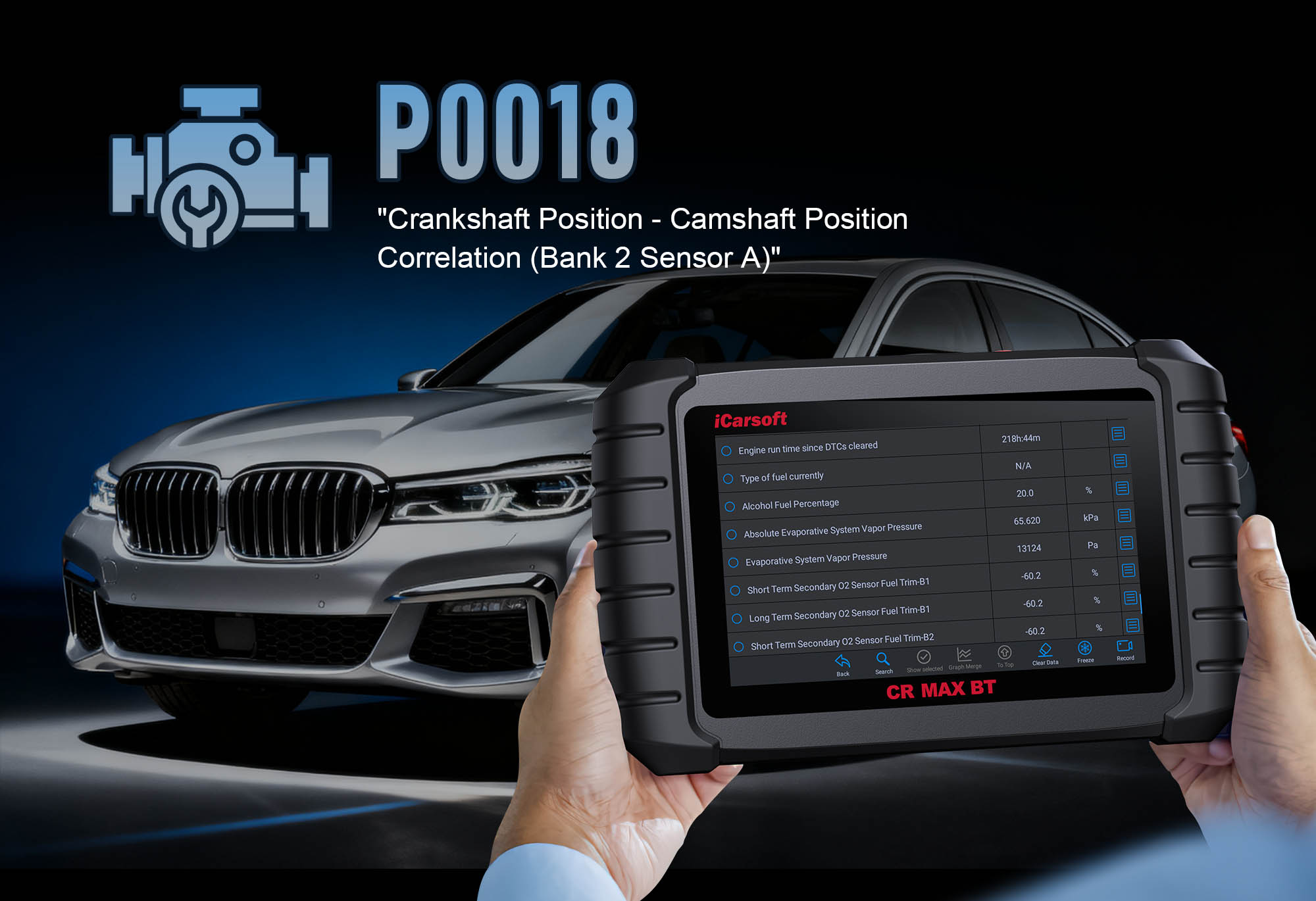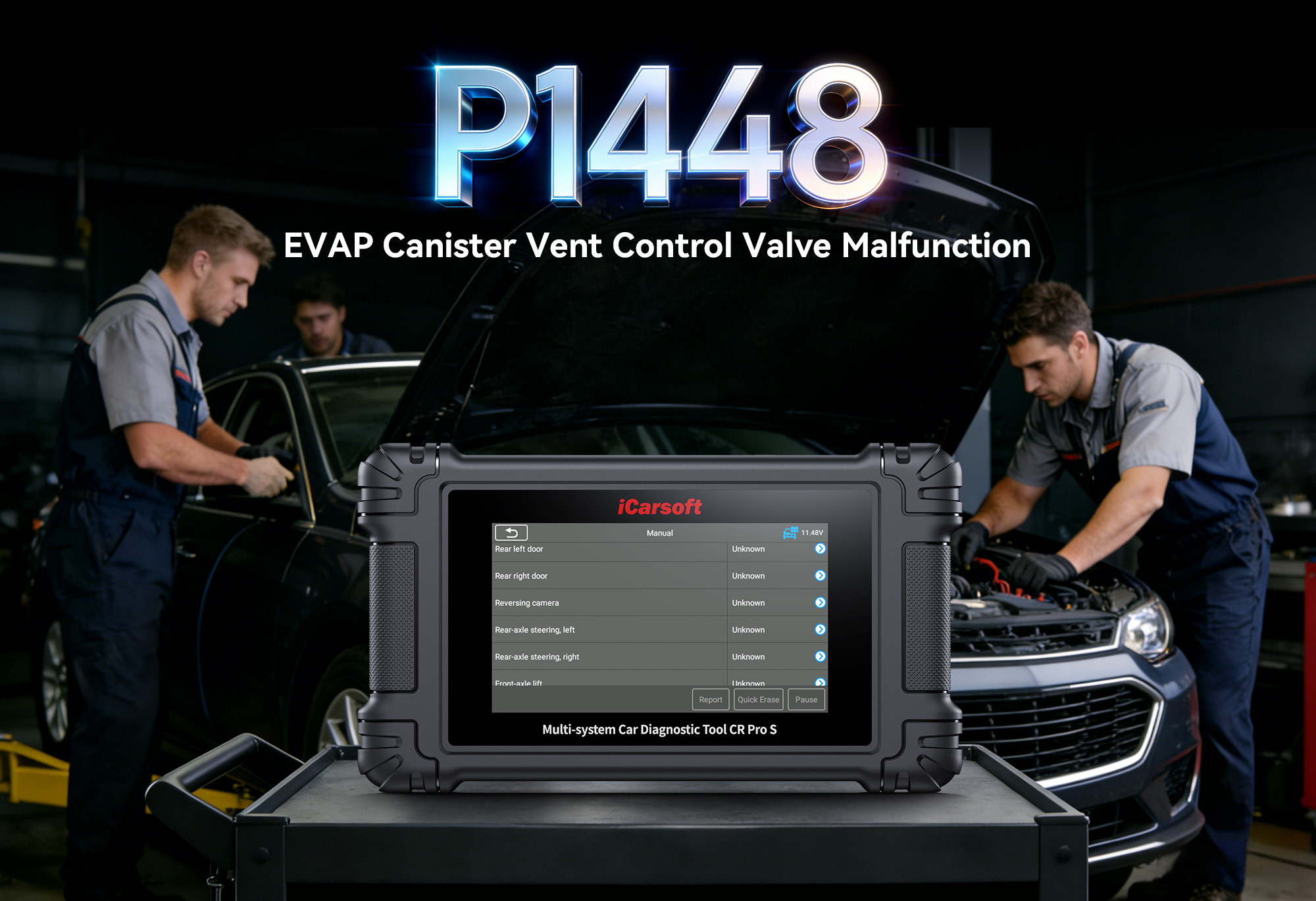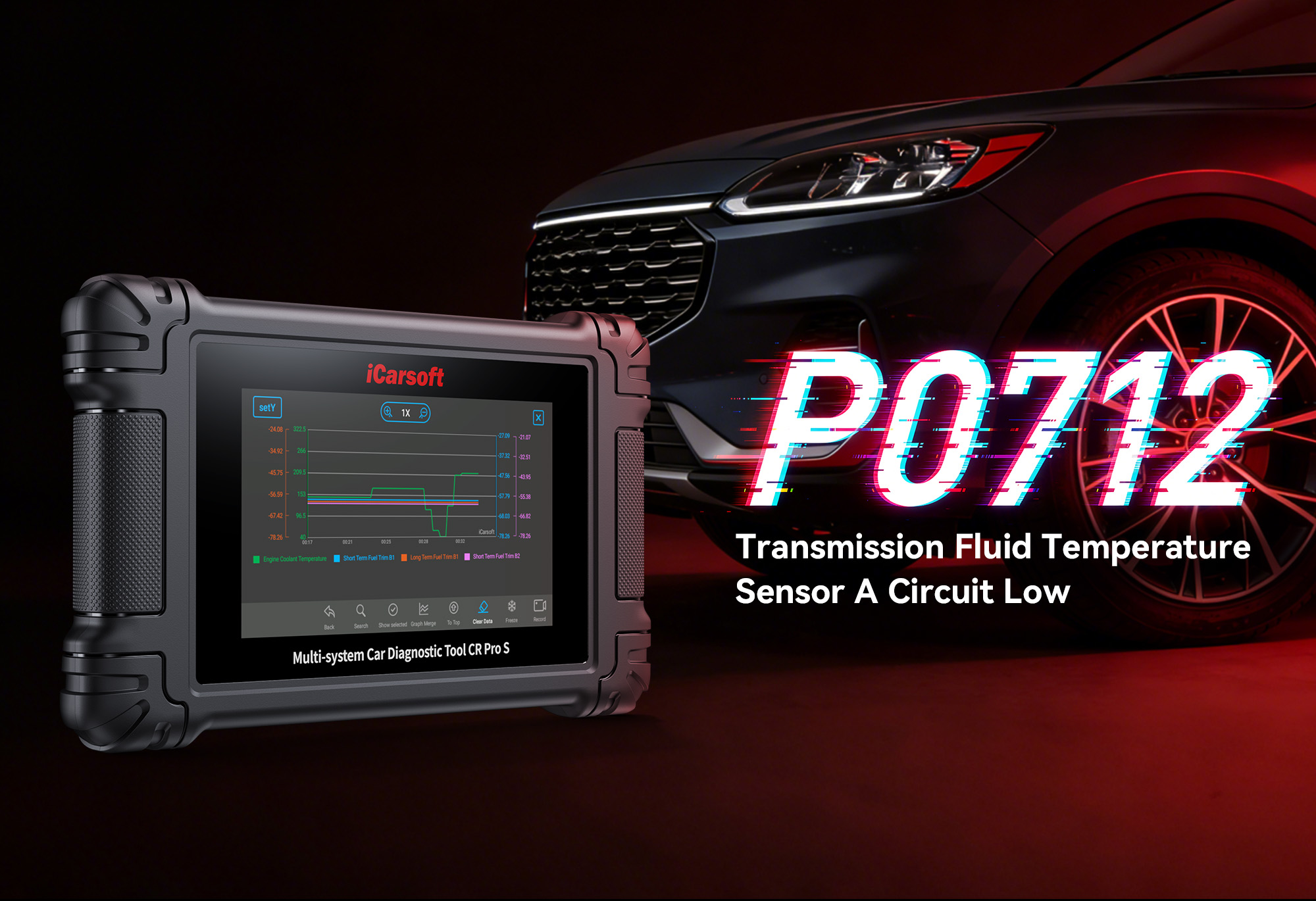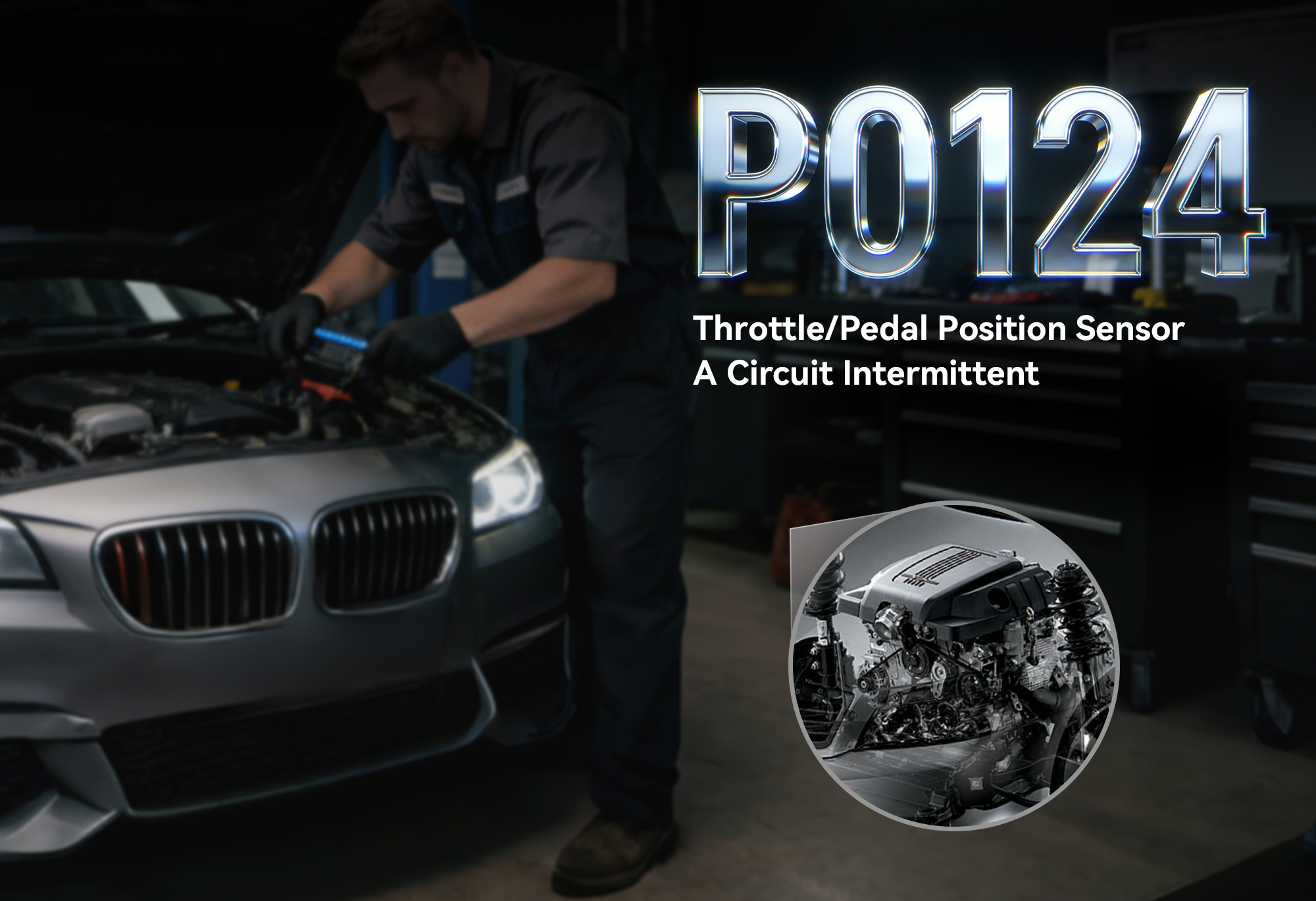Diagnose & Clear P0018 with iCarsoft CR MAX BT: Fix Crankshaft Position - Camshaft Position Correlation (Bank 1 Sensor B)
If your check engine light illuminates and you notice rough idling, delayed acceleration, or even engine misfires, a scan will likely return P0018. This critical OBD-II code stands for "Crankshaft Position - Camshaft Position Correlation (Bank 1, Sensor B)," indicating the Engine Control Module (ECM) has detected a mismatch between the crankshaft’s rotational position and the camshaft’s position on Bank 1 (Sensor B, typically the exhaust camshaft).
The crankshaft and camshaft work in perfect sync to control fuel injection and ignition timing—even a 10° variance can disrupt combustion. Sensor B (exhaust camshaft) and the crankshaft position sensor send real-time data to the ECM; when their signals don’t align, the ECM flags P0018 to prevent engine damage. Left unaddressed, this issue can lead to reduced power, increased fuel consumption, or even bent valves in extreme cases.
Basic scanners may only flag "camshaft/crankshaft mismatch" but can’t compare sensor timings or test variable valve timing (VVT) components. The iCarsoft CR MAX BT—with its real-time timing correlation, VVT actuator tests, and component location diagrams—solves this. Let’s explore how to diagnose and resolve P0018 using this advanced tool.
 iCarsoft CR MAX BT: Monitoring crankshaft-camshaft timing alignment for P0018 (Bank 1 Sensor B)
iCarsoft CR MAX BT: Monitoring crankshaft-camshaft timing alignment for P0018 (Bank 1 Sensor B)
Understanding P0018: Causes & Key Symptoms
A misaligned crankshaft-camshaft correlation disrupts engine timing, leading to distinct performance issues:
Key Symptoms of P0018
-
Check Engine Light: Illuminates when the ECM detects a timing variance exceeding 5–15° (varies by manufacturer) for 2+ drive cycles.
-
Rough Idle or Misfires: Mismatched timing causes incomplete combustion, resulting in vibrations at idle or hesitation during acceleration.
-
Reduced Power: The engine struggles to generate full power, especially at high RPMs (e.g., slow acceleration when merging onto highways).
-
Increased Fuel Consumption: Poor combustion lowers MPG by 15–25% as the engine compensates for timing errors.
-
Cold Start Issues: The engine may take longer to start or stall shortly after ignition (timing misalignment disrupts cold-start fuel delivery).
-
VVT System Noise: A faulty Variable Valve Timing (VVT) solenoid or actuator may produce a rattling/clicking sound from the valve cover.
Common Causes of P0018
-
Faulty Camshaft Position Sensor (Bank 1, Sensor B): A failed sensor sends incorrect position data to the ECM, creating a false timing mismatch.
-
Damaged Crankshaft Position Sensor: Similar to the camshaft sensor, a faulty crankshaft sensor disrupts the reference signal for timing.
-
VVT System Malfunction: A stuck VVT solenoid, clogged oil passage, or failed VVT actuator prevents the camshaft from adjusting to the correct position.
-
Timing Chain/Belt Wear: A stretched timing chain or worn belt shifts the camshaft relative to the crankshaft (common in high-mileage vehicles).
-
Oil Contamination or Low Pressure: Dirty oil clogs VVT passages, while low oil pressure prevents the VVT system from operating (VVT relies on oil pressure to adjust timing).
-
Wiring/Connector Damage: Frayed wires or corroded terminals in the camshaft/crankshaft sensor circuits disrupt signal transmission.
Why iCarsoft CR MAX BT Excels at Diagnosing P0018
The CR MAX BT outperforms basic tools with features tailored to timing system diagnostics:
Real-Time Timing Correlation
Compares crankshaft and camshaft position data in real time, showing exact variance (e.g., "Bank 1 Sensor B: +12° Offset") to confirm P0018.
VVT Actuator Bi-Directional Tests
Sends direct commands to the VVT solenoid/actuator to verify if it adjusts camshaft timing—isolating mechanical vs. electrical faults.
3D Component Diagrams
Preloaded schematics show Bank 1 Sensor B (exhaust camshaft sensor) location, VVT system components, and wiring paths for 80+ makes (e.g., Chevrolet, Ford, BMW, Toyota).
Oil Pressure Monitoring
Tracks engine oil pressure to rule out low pressure as a cause of VVT failure.
Sensor Signal Waveform Analysis
Visualizes camshaft/crankshaft sensor signals, detecting weak or erratic patterns that indicate sensor failure.
Timing Chain Wear Alerts
Integrates engine mileage and maintenance data to flag potential timing chain stretch (common in vehicles over 100,000 miles).
Step-by-Step: Diagnose P0018 with iCarsoft CR MAX BT
-
Connect & Confirm the Code
Plug the CR MAX BT into your vehicle’s OBD-II port and pair it with your smartphone/tablet via the iCarsoft app (Bluetooth setup takes 30 seconds). Select your vehicle using Auto VIN Scan (reads VIN instantly) or manual entry (make/model/year/engine). Navigate to Engine > Fault Codes > Read Codes to confirm P0018. Tap Code Details for vehicle-specific insights (e.g., "Chevrolet: Camshaft Position Sensor B Bank 1 – 15° Offset from Crankshaft").
-
Locate Key Components (Bank 1 Sensor B & VVT System)
Use the CR MAX BT to avoid confusion:
-
Go to Component Location > Engine > Timing System > Camshaft Sensor (Bank 1 Sensor B). The app displays a 3D diagram: Bank 1 contains cylinder #1; Sensor B is the exhaust camshaft sensor (usually mounted near the valve cover).
-
Navigate to VVT System > Solenoid/Actuator to locate the VVT components (typically on the front of the cylinder head).
-
Analyze Real-Time Timing Data
The CR MAX BT’s live data reveals timing mismatches:
-
Start the engine and let it reach operating temperature (10–15 minutes).
-
In the app, go to Engine > Live Data > Timing Sensors and monitor:
-
Crankshaft Position (CKP): Should show steady rotational degrees (e.g., 0–720°).
-
Camshaft Position (CMP) Bank 1 Sensor B: Should align with CKP (variance ≤5°). P0018 = variance >10°.
-
VVT Oil Pressure: Normal = 25–60 psi (varies by vehicle). Low pressure = check oil level/condition.
-
Note the variance: A consistent offset (e.g., +12°) suggests timing chain wear; an erratic offset points to a faulty sensor.
-
Test Camshaft/Crankshaft Sensors
Sensor failure causes 30% of P0018 cases—verify with the CR MAX BT:
-
Signal Waveform Test: Navigate to Special Functions > Engine > Sensor Tests > CMP/CKP Waveform. A healthy sensor shows a sharp, consistent waveform; a faulty sensor has weak spikes or dropped signals.
-
Resistance Test: Disconnect the camshaft sensor (Bank 1 Sensor B) connector. Use the app’s Multimeter Function to measure resistance across the sensor pins. Normal = 800–1,500 ohms (varies by manufacturer). Infinite/0 ohms = replace the sensor.
-
Crankshaft Sensor Comparison: Repeat the resistance/waveform test for the crankshaft sensor. If both sensors fail, check for a shared wiring issue (e.g., corroded ground).
-
Test the VVT System
A faulty VVT system often mimics sensor issues—diagnose with the CR MAX BT:
-
VVT Solenoid Activation Test: Go to Special Functions > Engine > VVT Control > Solenoid Test (Bank 1). The app sends commands to open/close the VVT solenoid. Listen for a clicking sound (indicates movement) and monitor live timing data—timing should adjust by 5–10°. No change = stuck solenoid or clogged oil passage.
-
Oil Passage Inspection: If the solenoid doesn’t respond, use the app’s VVT Oil Passage Guide to locate and inspect passages for clogs. Dirty oil = flush the system and replace the oil filter.
-
Inspect Timing Chain/Belt (If Applicable)
For vehicles with timing chains (common in modern engines), wear causes timing drift:
-
Use the app’s Timing Chain Wear Guide to check for symptoms:
-
Rattling noise from the front of the engine (at startup).
-
Increasing timing variance as the engine warms up.
-
If wear is suspected, a mechanical inspection is required—but the CR MAX BT’s timing data helps confirm the need before disassembly.
-
Check Wiring & Connectors
Electrical faults disrupt sensor signals—verify with the CR MAX BT:
-
Circuit Continuity Test: Use the app’s wiring diagram to check continuity between the camshaft sensor (Bank 1 Sensor B) and ECM. >1 ohm = broken wire—repair with heat-shrink connectors.
-
Connector Cleaning: Inspect sensor connectors for corrosion (white/green deposits). Clean terminals with electrical contact cleaner and apply dielectric grease to prevent moisture damage.
-
Repair & Clear P0018
Fix the Root Cause:
-
Replace the camshaft sensor (Bank 1 Sensor B) or crankshaft sensor (use OEM parts—check the app’s Part Lookup).
-
Repair the VVT system: Replace a stuck solenoid, clean clogged oil passages, or fix low oil pressure (replace oil pump if needed).
-
Replace a stretched timing chain/belt (follow the app’s Timing Service Guide for torque specs).
-
Repair wiring faults with heat-shrink connectors; replace corroded harnesses.
Clear the Code: In the app, go to Engine > Fault Codes > Clear Codes to delete P0018.
-
Validate the Repair
Confirm timing alignment and system functionality:
-
Recheck live data—camshaft/crankshaft variance should be ≤5°.
-
Test drive for 20–30 minutes (including acceleration/deceleration) to check for smooth performance and no misfires.
-
Monitor VVT oil pressure and solenoid response during driving.
-
Re-scan with the CR MAX BT: No P0018 recurrence = successful repair.
Preventing P0018 Recurrence
The CR MAX BT helps maintain reliable timing system performance long-term:
-
Oil Maintenance: Use the app’s Service Reminder to change oil every 5,000–7,500 miles (use manufacturer-recommended oil to prevent VVT clogs).
-
Sensor Inspection: Include camshaft/crankshaft sensors in annual tune-ups—check for corrosion and signal strength.
-
Timing Chain Checks: For high-mileage vehicles (>80,000 miles), use the CR MAX BT’s timing data to monitor chain wear quarterly.
-
VVT System Care: Set reminders to inspect VVT solenoids and oil passages every 30,000 miles.
Conclusion
P0018’s timing mismatch is a critical issue, but the iCarsoft CR MAX BT simplifies diagnosis with real-time correlation, VVT testing, and sensor analysis. Whether replacing a sensor, fixing the VVT system, or addressing timing chain wear, this tool ensures you resolve the root cause—restoring engine performance, fuel efficiency, and long-term reliability.
With the CR MAX BT, you don’t need to rely on guesswork or expensive dealership diagnostics to fix P0018. Diagnose, repair, and validate the issue yourself, keeping your engine’s timing perfectly synchronized for every drive.

 iCarsoft CR MAX BT: Monitoring crankshaft-camshaft timing alignment for P0018 (Bank 1 Sensor B)
iCarsoft CR MAX BT: Monitoring crankshaft-camshaft timing alignment for P0018 (Bank 1 Sensor B)



